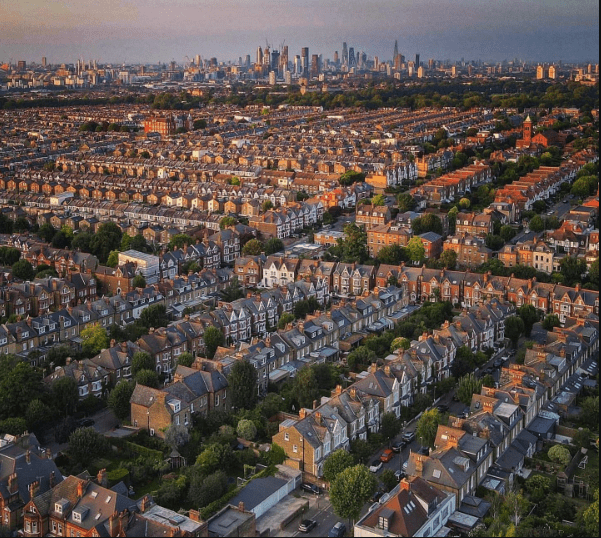The flight from cities seen during the height of the COVID-19 pandemic is now showing signs of reversing, as new analysis from property platform Rightmove reveals a renewed appetite for urban living—most notably in London.
While London is once again drawing in homebuyers, the capital has seen a notable shift in its wealthy demographic in recent years. High-net-worth individuals have been moving out of the city in response to tax changes and cost-of-living pressures, creating a contrasting trend alongside the return of mainstream urban demand.
According to Rightmove’s latest report, which assesses housing and mortgage patterns from March 2020 to the present day, interest in rural and coastal locations has started to wane.
The early pandemic years saw a surge in searches for countryside retreats and coastal escapes, driven by remote working and lifestyle re-evaluations. In fact, during 2021, Cornwall overtook London as the most searched-for location on the platform.
At that time, just 47% of London-based buyers intended to remain in the capital, a sharp drop from 59% the previous year. However, by 2025, the pendulum has swung back 58% of Londoners now plan to stay within the city, signalling a renewed confidence in urban life.
Meanwhile, demand in seaside towns has softened. Homes in coastal areas now take an average of 73 days to sell, compared to 52 days in 2021. London’s property market has remained comparatively steady, with homes currently taking an average of 65 days to sell — only slightly more than the 63-day average recorded four years ago.
Price growth also reflects this cooling trend in seaside regions. In March 2021, coastal homes experienced a 4.5% annual rise in asking prices, outpacing the national average of 2.7%. Today, prices in those same areas are rising by just 1% year-on-year, aligning with broader national trends as supply and demand reach a more balanced state.
“Five years on from the pandemic, many short-term trends brought about by the unique circumstances of lockdown have reversed,” said Steve Pimblett, chief data officer at Rightmove.
“Coastal homes are taking longer to find buyers and price growth has stabilised as more supply has come onto the market, some likely from movers heading back to the city. At the same time, fewer people are looking to escape cities, as life has returned to normal, and the debate continues about remote versus office working.”
Nathan Emerson, chief executive of Propertymark, echoed this sentiment: “Directly following the pandemic, many people saw the home working revolution as a potential opportunity to pursue a new or different lifestyle, often away from traditional town and city centres, as there was little need to be present within a physical office location five days a week.
Substantial numbers of employers are now starting to ask their employees to make a return to centralised office locations, thus reversing the trend of five years ago for many people, and they are choosing metropolitan areas once again where there are likely better transport links and a more competitive jobs market in many cases.”
For first-time buyers, the property landscape remains challenging. Although average wages have increased by 30% since 2020, the typical asking price for a first home has risen by 17%, reaching £227,965.
However, rising house prices are only part of the story. Rental costs have surged by 42% over the same period, far outpacing wage growth and making it increasingly difficult for prospective buyers to save for deposits. On top of that, the cost of borrowing has soared.
The average five-year fixed mortgage rate now stands at 4.73%, more than double the 2.15% recorded in 2020. This means that a first-time buyer with a 20% deposit would now be paying around £949 per month in mortgage repayments — up from £590 just five years ago.
Despite changing location preferences, buyers’ desire for space remains strong. Larger homes — particularly semi-detached and detached properties — have seen more robust price growth compared to flats, a trend consistent over the past five years.
Online search behaviour backs this up. Features related to space continue to dominate buyer priorities. In the rental sector, pet-friendly properties remain in high demand, while listings that include bills—once highly sought after during the 2022 inflation spike—have slipped out of the top five search terms.
As the housing market continues to evolve post-pandemic, urban living appears to be firmly back on the agenda, even as affordability challenges persist for those trying to step onto the property ladder.






